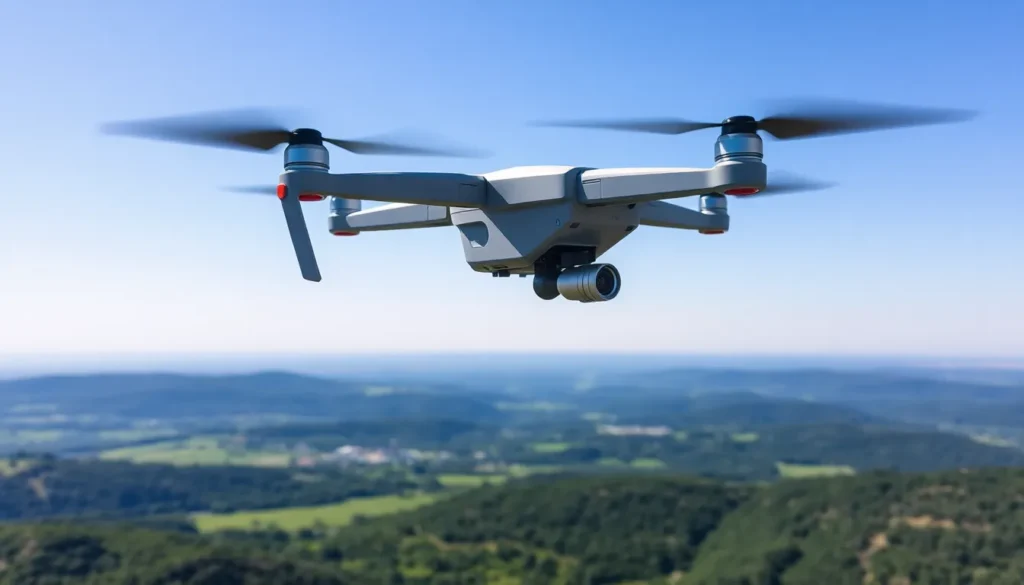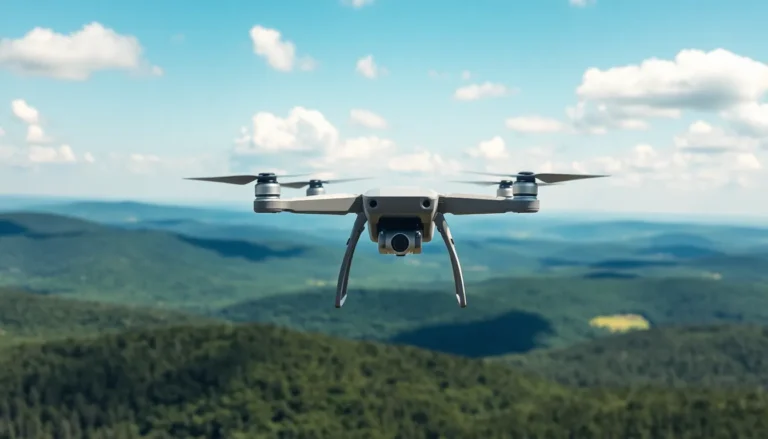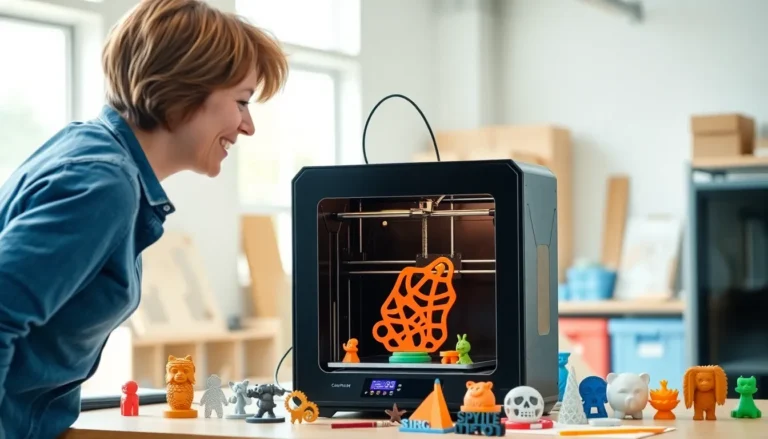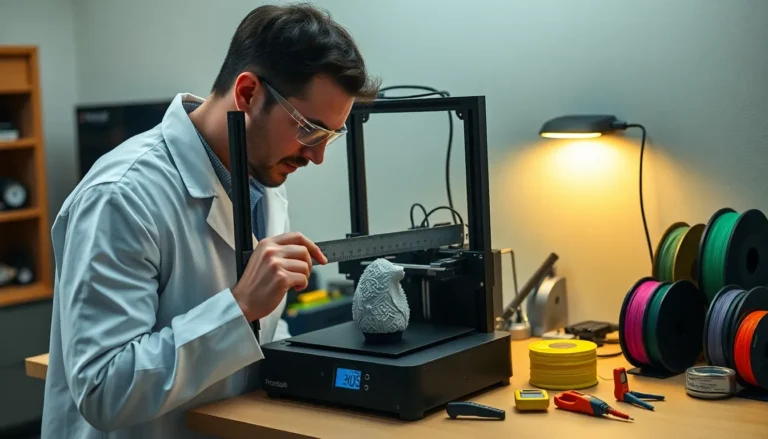In a world where drones are the new superheroes of the skies, their stabilization features are like the trusty sidekicks that keep them flying straight and true. Imagine capturing breathtaking aerial shots without the jittery chaos that makes viewers question their lunch. With advancements in technology, these flying wonders have become more stable than a cat on a windowsill.
Table of Contents
ToggleOverview of Drone Stabilization Features
Drones utilize advanced stabilization features to enhance aerial photography. Gimbals play a crucial role by maintaining the camera’s alignment, minimizing vibrations during flight. Electronic Image Stabilization (EIS) adjusts the footage in real-time, compensating for any minor shakes caused by wind or abrupt movements.
GPS stabilization helps maintain a steady position in the air, allowing photographers to capture detailed shots from specific angles. In addition, intelligent flight modes, such as active tracking and waypoint management, ensure that the drone remains stable while following subjects or navigating predetermined paths.
Gyroscopes and accelerometers are integral components that monitor the drone’s orientation. These sensors provide feedback to adjust the position of the drone instantly, ensuring a smooth flight experience. Furthermore, software algorithms enhance video quality by analyzing and correcting shakes or tilts that occur during flight.
Other stabilization features may include dual-axis and three-axis gimbals, which provide different stabilization levels based on the drone’s design and intended use. Knowledge of these features helps users choose the right drone for specific photography needs, ensuring optimal performance and results.
In commercial applications, these stabilization enhancements provide consistency in output, making them valuable for industries such as real estate and cinematography. Users seeking professional-quality footage greatly benefit from the seamless, stable images produced by modern drone technology.
Importance of Stabilization in Drones
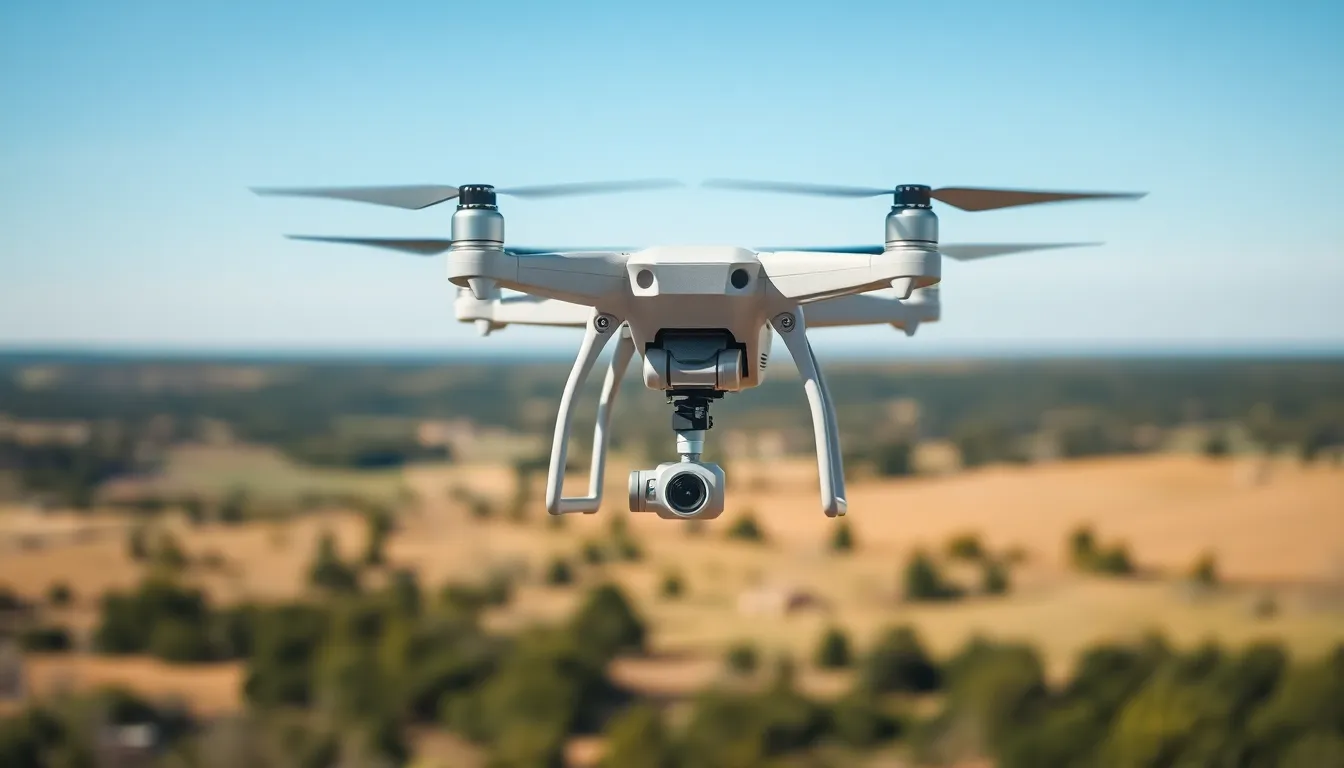
Stabilization features play a critical role in the performance of drones. These advances elevate the quality of aerial photography and videography.
Enhancing Image Quality
Image quality significantly improves with effective stabilization technologies. Gimbals actively compensate for drone movement, resulting in smoother footage. Electronic Image Stabilization (EIS) rapidly adjusts images, correcting shakes in real time. The use of gyroscopes and accelerometers ensures precise monitoring of orientation, which further enhances image clarity. Users notice fewer distractions from vibrations or tilts, allowing for more professional-looking results. High-quality footage becomes more attainable, appealing to industries requiring exceptional visual presentations. Choosing drones equipped with advanced stabilization features shows a commitment to capturing stunning visuals.
Improving Flight Control
Flight control benefits immensely from stabilization mechanisms. GPS stabilization aids in maintaining a steady course during flight, which minimizes the risk of drift. Intelligent flight modes simplify operation by optimizing stability as the drone tracks moving subjects. Increasing control leads to better maneuverability, allowing operators to execute complex shots with ease. Reliable stabilization gives operators the confidence to fly in various conditions, including light winds or challenging environments. Such enhancements result in seamless, controlled flight experiences, crucial for industries relying on consistent performance.
Types of Stabilization Systems
Drones utilize various stabilization systems to enhance aerial photography and videography quality. Understanding these systems enables users to choose the most suitable drone for specific requirements.
Mechanical Stabilization
Mechanical stabilization relies on physical components to counteract movement. Gimbals represent the most common example of this system, acting as a pivot point that keeps the camera balanced. Dual-axis gimbals stabilize motion along two axes, while three-axis gimbals add stabilization along a third axis for greater control. This technology significantly reduces vibrations and shakes during flight, ensuring smooth footage. Its effectiveness, especially in windy conditions, makes mechanical stabilization a preferred choice for serious videographers and photographers.
Electronic Stabilization
Electronic stabilization employs software algorithms to enhance image quality. With Electronic Image Stabilization (EIS), drones can adjust footage in real time to correct shakes and tilts. By analyzing video frames, EIS intelligently compensates for drone movement, resulting in steadier shots. This technology works well in dynamic environments, allowing operators to capture crisp images while in motion. Its ability to improve overall video quality without relying solely on hardware makes electronic stabilization a viable option for many drone users.
Hybrid Stabilization
Hybrid stabilization combines mechanical and electronic methods for optimal performance. This approach utilizes both gimbals and EIS to maximize stabilization effects. By merging hardware stability with software adjustments, hybrid systems effectively counteract various drone motions. This combination leads to even smoother footage, especially in challenging conditions. Users often find hybrid stabilization ideal for professional applications, as it addresses a variety of stabilization needs with a comprehensive solution.
Key Technologies in Drone Stabilization
Drone stabilization relies on several key technologies that enhance flight performance and image quality. Three primary components—gyroscopic sensors, accelerometers, and software algorithms—work together to ensure smooth operation.
Gyroscopic Sensors
Gyroscopic sensors play a crucial role in maintaining balance and orientation. They continuously measure the drone’s angular velocity and provide real-time data to adjust its movement. With gyros in place, drones can counteract rotational changes, leading to a steady visual output. Moreover, these sensors help prevent unwanted tilt during flight, ensuring high-quality footage. Users benefit from sharper images and a smoother, more professional overall experience.
Accelerometers
Accelerometers detect linear acceleration and aid in controlling the drone’s movements. By monitoring speed and direction, they enable quick adjustments that enhance stability. These devices ensure the drone maintains a consistent altitude and trajectory. Operators appreciate how accelerometers complement gyros for optimal performance in complex flying conditions. The precise data provided by these sensors contributes significantly to minimizing drone drift and improving overall control.
Software Algorithms
Software algorithms refine stabilization by processing data from gyros and accelerometers. They analyze camera movements and make adjustments in real time, effectively correcting shakes and vibrations. This functionality increases the quality of video footage significantly, especially during rapid maneuvers. Intelligent algorithms adapt to different environments, making them suitable for various flying conditions. Users enjoy improved image clarity and less distortion, enhancing the viewing experience.
The advancements in drone stabilization features have transformed aerial photography and videography. With technologies like gimbals and Electronic Image Stabilization, operators can achieve smooth and professional-quality footage, even in challenging conditions.
Understanding the different types of stabilization systems—mechanical, electronic, and hybrid—enables users to select the best equipment for their specific needs. The integration of gyroscopic sensors and accelerometers further enhances stability, ensuring that every shot is clear and captivating.
As industries increasingly rely on high-quality visuals, the importance of effective stabilization cannot be overstated. These innovations not only elevate creative possibilities but also instill confidence in operators, allowing them to push the boundaries of aerial imaging.

